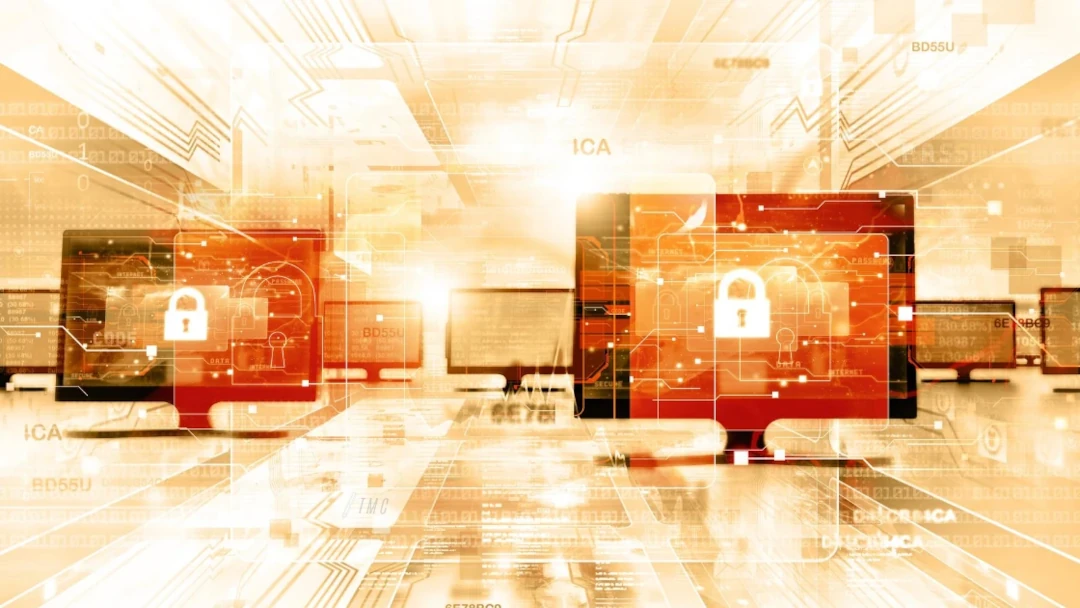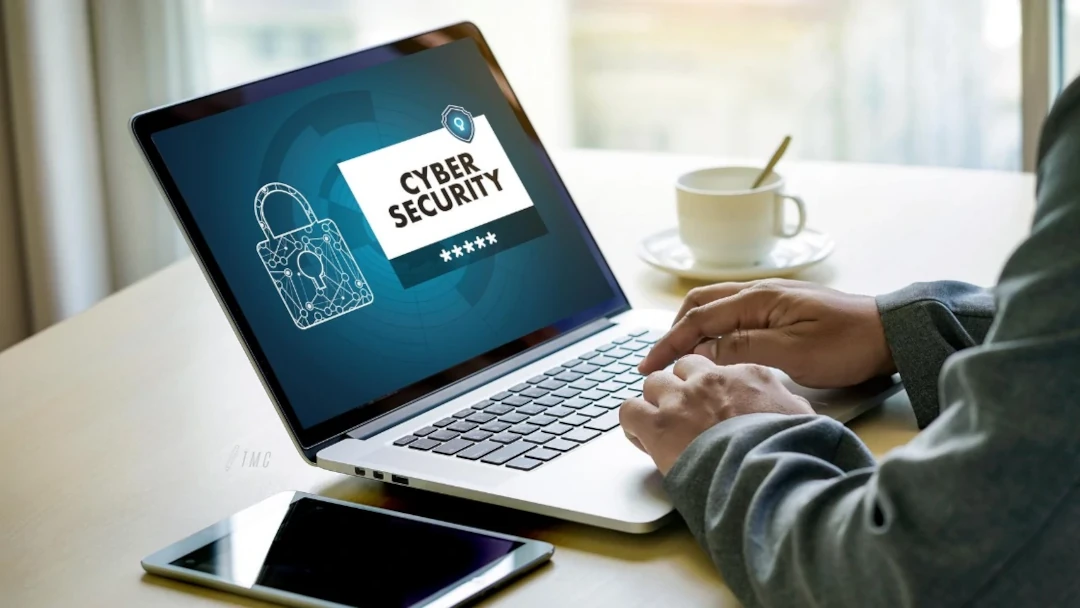
Cybersecurity in the Workplace: 5 Ways to Secure Your Business
Cybersecurity in the workplace has varying standards depending if the company prioritizes security. Small businesses, for instance, think that cyber attackers only attack big and established businesses. It is why most small to medium-sized enterprises (SMEs) are have subpar cybersecurity protection.
Cyber attackers exploit this lack of security protocols in businesses to inject malware, breach data, or conduct ransomware attacks.
Workplaces need to be secured from cyber threats, not just for the sake of their employees, but for the sake of customers who trust businesses with their sensitive data, even including bank records and other identification details.
Hackers can also steal information like employee details and vendor information, to the detriment of the company being victimized.
A data breach is not to be ignored because it has cost millions in companies worldwide, be it a big company, growing enterprise, or startup.
A Ponemon report shows that only 30% of small businesses are capable of fighting cyber attacks due to lack of workforce (77%), cybersecurity funds (55%), adeptness in cybersecurity (45%).
Companies need to audit their level of defense against cyber-attacks, especially if data security breaches can cost big businesses $150 million for every major attack. One major data breach attack can cause the downfall of businesses unable to afford lawsuits that can be caused by data breach attacks. The bigger the company, the more data is collected and stored. The risk is also greater for cyber-attacks and data breaches, and the higher the cost it would take to ensure and protect the business from it.
Here are ways on how to improve your cybersecurity in the workplace.
5 Ways to Secure Businesses with Better Cybersecurity
1. Only Use Secure Networks

Businesses need to use encrypted WiFi networks that are more secure, preventing the company’s Service Set Identifier (SSID) from being broadcast.
Secure passwords as well, making sure that you limit network access only to authorized employees. Set up the WiFi in such a manner that restricts employees from knowing the network password. Your IT department can open access to phones and computers without giving away the password information freely to employees, who can just share them with unauthorized individuals.
There should be a separate network for guests or customers different from employees. It gives an extra layer of protection to your company’s network.
Strengthen WiFi encryption as well to improve your business’ cybersecurity and keep hackers out of your website or your WiFi network.
These are the different types of WiFi protection available today:
- WEP or Wired Equivalent Privacy:
WEP is an IEEE Wireless Fidelity or WiFi standard security protocol, 802.11b, providing WLAN (Wireless Local Area Network). It has the same level of security and privacy as a wired LAN. - WPA or WiFi Protected Access:
WPA is a security protocol that is stronger at managing security keys and user authorization procedures for networks. It uses TKIP (Temporal Key Integrity Protocol), which regularly modifies critical systems, stopping attackers from creating duplicate encryption keys to hack systems. - WPA2 or WiFi Protected Access 2:
WPA2 is a security process in addition to WPA, which increases data protection and network access. Based on standard IEEE 802.11i, WPA2 gives security at par with government standards. Only approved users can access wireless networks. Users can choose either a WPA2-Personal or WPA2-Enterprise based on their needs. - WPA3 or WiFi Protected Access 3:
WPA3 is a WiFi security protocol that protects the integrity of your connection by making the “Krack” vulnerability of WPA2 ineffective. It does this by initiating a protocol called “Simultaneous Authentication of Equals” (SAE) that handles the initial key exchange by allowing only a single password submission per request.
If a hacker decides to use “Krack” where the attacker can submit unlimited attempts to brute-force guess a connection’s password, SAE will only allow one password submission per request. It would make the process more tedious for the hacker by extending the time to guess multiple passwords.
Several companies use WiFi routers with WPS and link devices via WPA. For enterprise or corporate mode, a RADIUS server is needed because physical storage is necessary for all login information if using WPA.
2. Keep Strict Password Protocols

A secure password should be complex and hard to decipher. A complex password usually has alphanumeric characters in both upper and lower case. Some come with unique characteristics that should be extended, like at least 20 characters.
Password generator apps are now available that can produce uniquely strong passwords. You can update your passwords routinely to prevent password leakage or hacking.
Again, password access should be limited to your IT personnel. Refrain from giving WiFi access to personal devices as well. It may seem unreasonable to those who want free WiFi, but there are some reasons to follow this protocol.
The first reason would be accountability. If workers use their personal devices to work and sign on to the business network, this means that they must be accountable to the IT department, and submit to the company’s security protocols. It is difficult to monitor, especially if not all employees would submit their devices (mobile phones and laptops) to company protocols. It takes integrity on the part of your employees.
For instance, if it is a company protocol not to download pirated software, employees in a BYOD system (Bring Your Own Device) would have to follow that protocol. If you have a small team, monitoring can be easier, but if you have a large company, this may be difficult to track. If you want your employees to have WiFi access, you can provide a separate, limited access network, just like a guest network.
First and foremost, if access to malicious, unsecured, or unauthorized sites is not allowed, employees would have to comply even if they are using their device on the company’s network. Employees would need to relinquish some authority over their device to follow company protocols on security and data privacy. It can get complicated. It is best not to allow personal devices on the company’s network, or at least to restrict the privilege to trusted employees.
Secondly, a BYOD system is also a vulnerability that hackers can exploit. Many cyber attacks have happened to businesses through unsuspecting employees, putting the company at risk through their own devices. Employees who bring their own devices can unnecessarily open gateways for cyber-criminals to access. Cyber-criminals are employing more ingenious ways to get into corporate networks, and often, it only takes one moment of negligence for cyber-attacks to happen. Hackers can crack complicated passwords, so it pays to be extra careful and amplify defense systems against password breach.
Such additional steps may be tedious, but they will make your security protection more robust. Teach the staff members to use best practices on their own devices as well. Build a culture of cybersecurity in your business that can affect others as well. Cybersecurity and keeping your data secure is a top priority.
3. Limit Access to Data

Just as you limit password access to your network, also restrict access to company computers and accounts on a need-to-know basis. Include this in the security protocols so your IT team can implement the rules without a hinge.
Data access must be classified and assessed depending on the individual and their responsibility. Add security layers, including new passwords, encryption, and security questions. Provide every employee their password so that in case of an attack, the IT team can monitor network use and hacker access point.
Restricting your employees’ data access privileges is in their best interests, as it better protects them, the company, and your valued customers. It may be cumbersome to have several layers of protection like this, but it saves you much money and guards your reputation. Recovering from malware attacks can be costly, and data breach lawsuits are costly. It pays to be cautious when it comes to cybersecurity and data privacy.
4. Create Data and System Backups

Creating physical backups and cloud-based backup is tantamount to securing files and systems.
You need to have regularly scheduled back-ups of systems, and every device or computer used by the team. Your IT personnel should facilitate it, so this needs to be in the company’s schedule as well. It can be done on weekends or on days when employees are off and should be done by a team or department.
The use of cloud storage is wise because in case physical backup devices experience damage, tampering, or loss, the company’s data remains safe in cloud-based storage solutions. In case of a catastrophe or ransomware attack, businesses can quickly recover and resume operations. It is possible when critical data is instantly recoverable, that is why cloud storage is a must.
Do not wait until an attack occurs before securing your data. Employ the 3-2-1 approach, where you store three copies of the backup, on two different media, and one copy in cloud storage.
5. Get the best antivirus and anti-malware protection

You must have state-of-the-art security software in all devices and networks used by the company. OS, apps, and software should be regularly updated, so the latest bug fixes or patches are also installed and carried out into your systems.
Hackers continue to think of more cunning and low-key methods of attack. Sometimes, the attack can be as simple and straightforward as a phishing email or smishing SMS. Most times, it is through elaborate and complicated malware attacks that infiltrate systems to steal data or perform destructive attacks.
Get the best antivirus and anti-malware security software you can afford as a company. There are several ways you can be hacked, but you can fight against cyber-attacks with these robust security protocols.
Conclusion: Train Employees to Have Security Awareness
No software can help if the company’s employees are not prepared and aware of cybersecurity and data management. Educate your employees with routine security awareness training. Craft user-friendly and duplicatable cybersecurity procedures so that cybersecurity best practices comes easy for everyone in the company.
Train your employees to know how to safeguard against cyber-attacks, so they are not left unguarded and unaware employees. Cybersecurity and data protection should be everybody’s concern and priority in the company.
AUTHOR’S BIO
Mayleen Meñez
Mayleen Meñez worked for seven years in TV and Radio production, and also as a Graphic Artist/Editor. Finding her true passion, she devoted 15 years in NGO and community development work, where she experienced being a coordinator and teacher, travelling both in the Philippines and countries in Asia. She homeschools her three kids and reinvents Filipino dishes in her spare time. Writing has always been a hobby and pursuit, and she recently added content writing with Softvire Australia and Softvire New Zealand up her sleeve, while preparing for her next adventure in the nations.
Loading comments...



